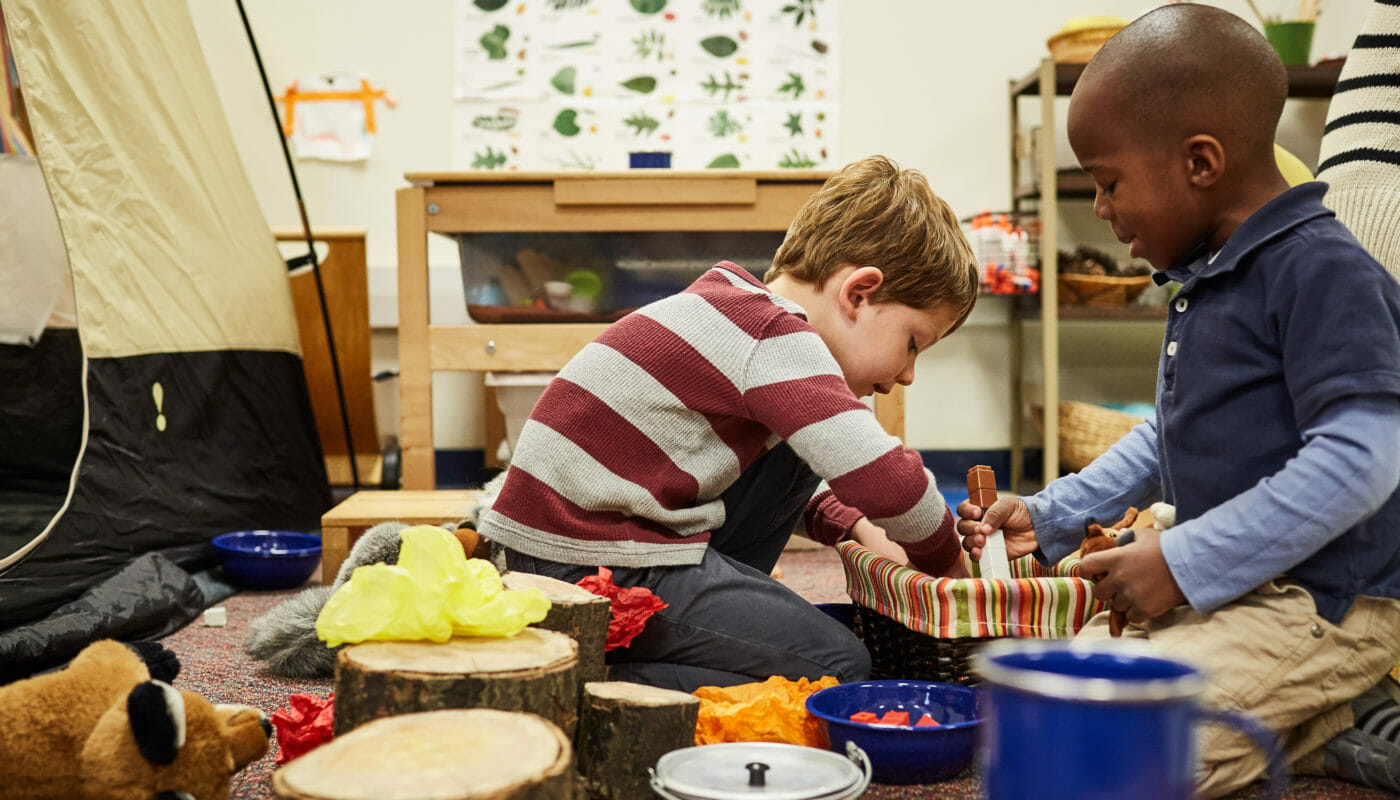“Who has ever been camping before?” Mrs. Wallace asks her Junior Kindergarten class. As hands raise and discussions begin, the week’s thematic study has officially begun–this time, the focus is on habitats. As children choose where they want to start their day, Mrs. Wallace focuses on an element of the forest to target the day’s approach. “What do we know about owls?” she asks.
Children are encouraged to move about the room freely and explore various elements of the theme. Some interact with each other and explore the tent and “campsite” that is set up in the room, others may create owls at the art table, dictate owl facts at the literacy table or play a math-based owl game at the math table.
With open exploration in mind, children continue their lesson outdoors. Exploration walks lead to discussions about insects, streams and plants—a first-hand interaction with the habitats surrounding them. “We believe that our youngest students learn through doing and playing,” says Mrs. Wallace. “And at the end of the day, they can tell you what they did because they had fun and remember it well.”
When our JK students move on to Senior Kindergarten (SK), they build on this foundation by exploring how they fit into their community and world. In later grades, each student brings their unique, inquisitive perspectives to topics like world history, geography and government through our project-based studies.
At MICDS, the instinct to discover becomes the foundation for success in any and every endeavor and spurs our students to challenge themselves and the world around them.
Sample Activities in the “Forest” Theme
- Nature’s Shapes and Colors: During exploration walks outdoors, children discuss the living things they see, such as trees and leaves. They then ask–and answer–questions such as “Why do trees lose their leaves?” and “Why do the leaves change colors?”
- Imaginative Play: Children “camp” in their classroom and participate in hands-on activities that allow them to use their imagination. Discussions come to life about forest animals–what they need, foods they like and how they get water.
- Stories About Animal Habitats: We introduce animals (nocturnal and diurnal) that they may find in a forest, and discuss what makes the forest a good habitat for that particular animal.
See more examples of how we use imagination and play to bring learning to life through themes!
